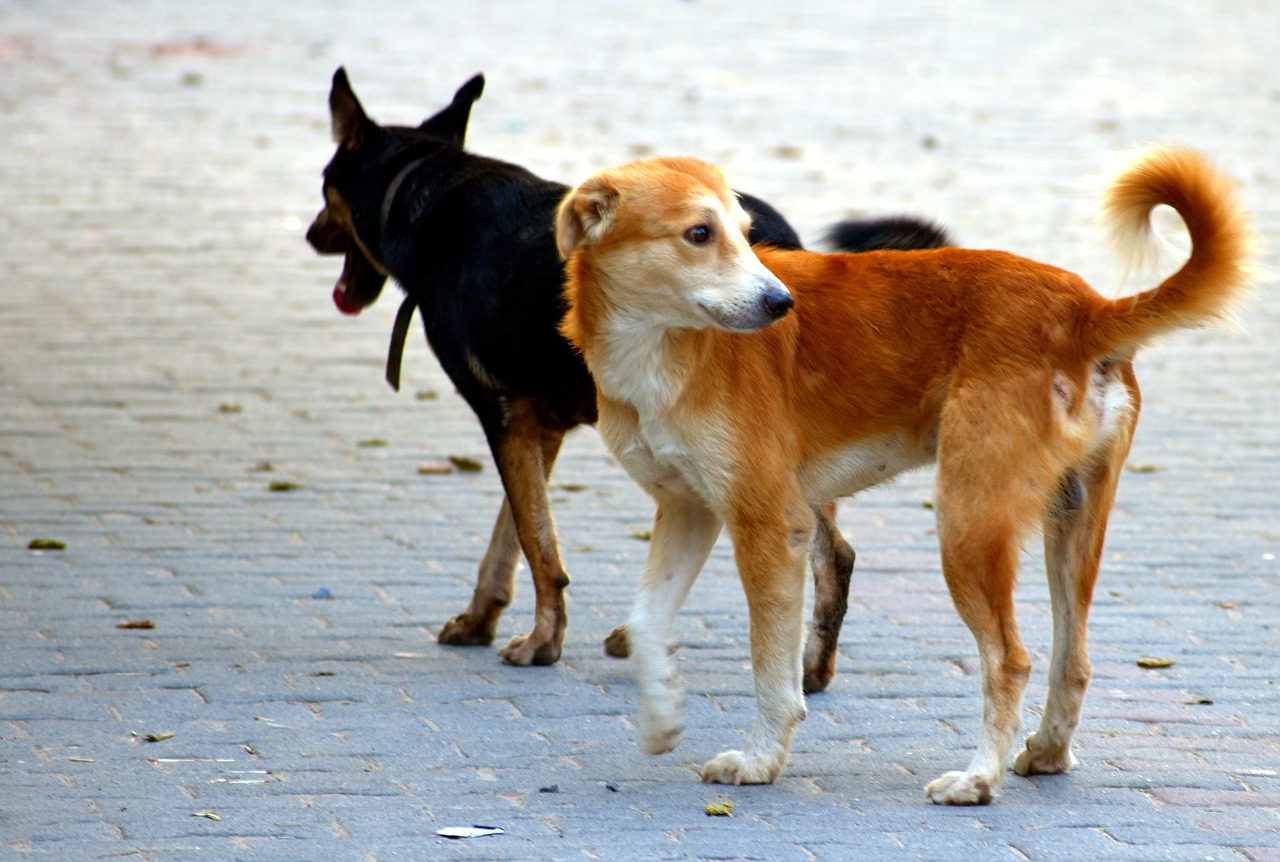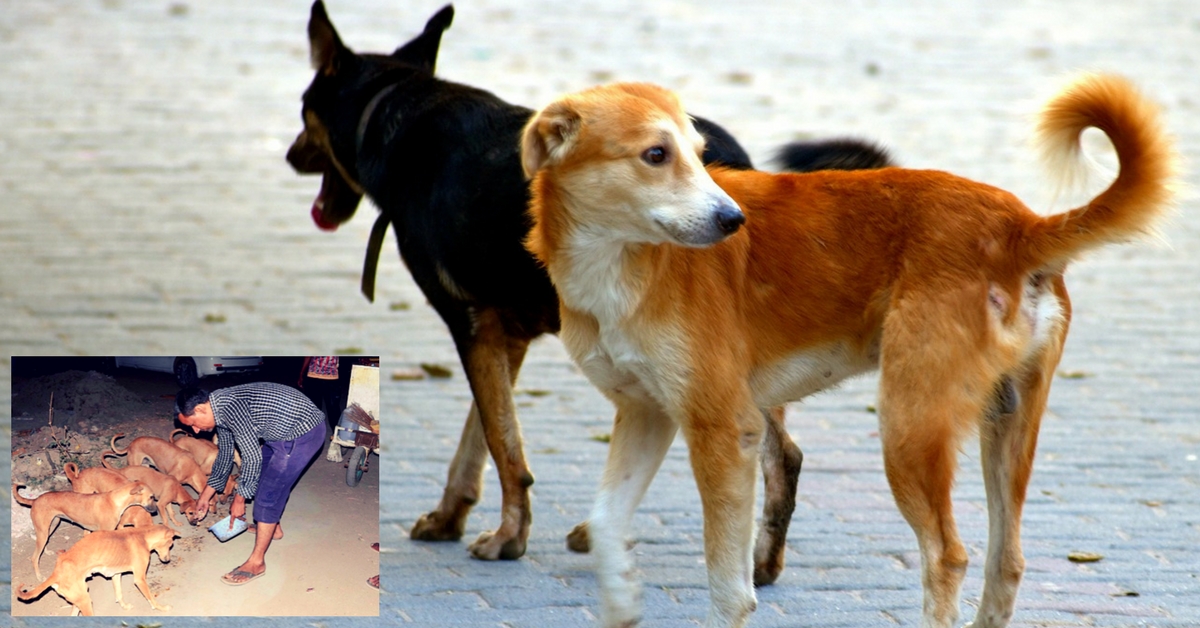In this day and age, where most people go out of their way to hold onto whatever tiny portions of land they own, over 70 dogs of Panchot village in Gujarat have almost 21 bighas of land (four bighas make an acre) for their welfare.
For those contemplating how big a deal this land holding could be, let us also tell you that this 21 bighas of land cost over Rs 73 crore!
This means that each of the 70 dogs is the unofficial owner of nothing less than a crore of land each. These dogs are indeed crorepatis!

Amazed? Well, if you were a resident of Panchot village that falls near Mehsana, Gujarat, land donated to the service of stray dogs wouldn’t be much of a shocker!
Panchot has an informal village trust christened the ‘Madh ni Pati Kutariya Trust’ which holds this land. And while the land may not technically be in the dogs’ names, all the income from the land is set aside for the dogs.
As the sowing season draws close every year, each plot of this land is auctioned. While the highest bidder gets tilling rights for a year, the money generated (close to Rs 1 lakh) goes into the maintenance and sustenance of the system.
This land did not cost all that much seven decades ago when it was donated to the dogs. But thanks to the construction of Mehsana bypass towards Radhanpur, today it has a market value of some Rs 3.5 crore per bigha.
So how did the tradition of donating land to canines start in the village?
The village, for over 70 years, has had a firm belief in the concept of ‘kutariyu’ – which translates to the setting aside of things for dogs. This practice finds its roots in a long historical tradition of ‘jivdaya’ or compassion for animals.
As part of this tradition, many well-to-do families started donating pieces of land for the welfare of animals. Many others followed suit, when additional land they owned became unaffordable to maintain.
Speaking to the Times of India, Chhaganbhai Patel, the president of the ‘Madh ni Pati Kutariya’ Trust says, “At that time land did not cost much. In a few cases, the land was donated as the owners could not even afford to pay taxes, so the donation shifted the responsibility.”
The driving forces behind the establishment of the trust was a group of four farmers, including Prabha Lallu, Chatur Viha, Amtha Kalu and Lakha Sheth. Having started the administration of the land about seven decades ago, they reveal how the land donations stopped after the village developed and land prices rose in the last few decades.
But what is interesting to note is that all of the lands that was transferred has no formal documentation. In fact till date the land records that exist still reflect the name of the original owner.
And yet, none of these landowners or their successive generations ever returned to reclaim their share, regardless of any financial crisis.
The reason behind this is shocking as well as heartwarming at the same time.
“It is considered taboo to feed off the land which has been written off for animals or social service,” Chagganbhai, whose own aunt had donated two bighas told TOI.
Dashrath Patel, Sarpanch Kantaben’s husband, whose family donated 1.5 bigha of land, said that the village is proud of the solid system it has built to serve animals.
“The culture of caring is passed from one generation to the next. I remember joining the community initiative to make sheera (a sweet dish) for the dogs about 60 years ago,” says Dashrath.
And so, the goodwill of the village doesn’t merely stop at making these stray sentries of the land.
READ MORE: Abandoned Dogs Are Not an Unusual Sight. This Initiative Is Trying to Change That!
Every day, when the clock strikes 7:30 pm, about 15 volunteers with handcarts loaded with rotlas and crushed flatbread distribute the food at 11 spots across the village where these strays gather.
In fact twice a month, on the full moon and new moon days, another special side dish gets added to the menu – laddoos.
These rotlas are prepared at a special building constructed by the trust called the ‘rotla ghar.’ Established in 2015, two women prepare over 80-odd rotlas every day inside the building with 20-30 kg flour. Neither the volunteers who feed these dogs patrolling the area nor the flour mill owner who supplies the ingredients to prepare the pearl millet flatbread charge any money.
While strays inside the village are taken good care of by the locals, even those on the outskirts or living near farms are fed by this distribution drives.
The trust, in addition to focussing on dogs, also follows charitable practices for birds and other animals.
Over 500 kilos of grains is received annually to feed birds. Many of these contributors are families of deceased members.
The village is also equipped with an air-conditioned burns ward for cows and different units for birds, monkeys and other animals run by the Abola Trust aka the Shivganga Animal Helpline.
We salute the locals at Panchot for truly making it a model village which places the need of voiceless animals first. Their work will hopefully be continued for generations.
(Edited By Vinayak Hegde)
In-set image credit – Times of India
Like this story? Or have something to share?
Write to us: contact@thebetterindia.com
Connect with us on Facebook and Twitter.
NEW: Click here to get positive news on WhatsApp!
We bring stories straight from the heart of India, to inspire millions and create a wave of impact. Our positive movement is growing bigger everyday, and we would love for you to join it.
Please contribute whatever you can, every little penny helps our team in bringing you more stories that support dreams and spread hope.

